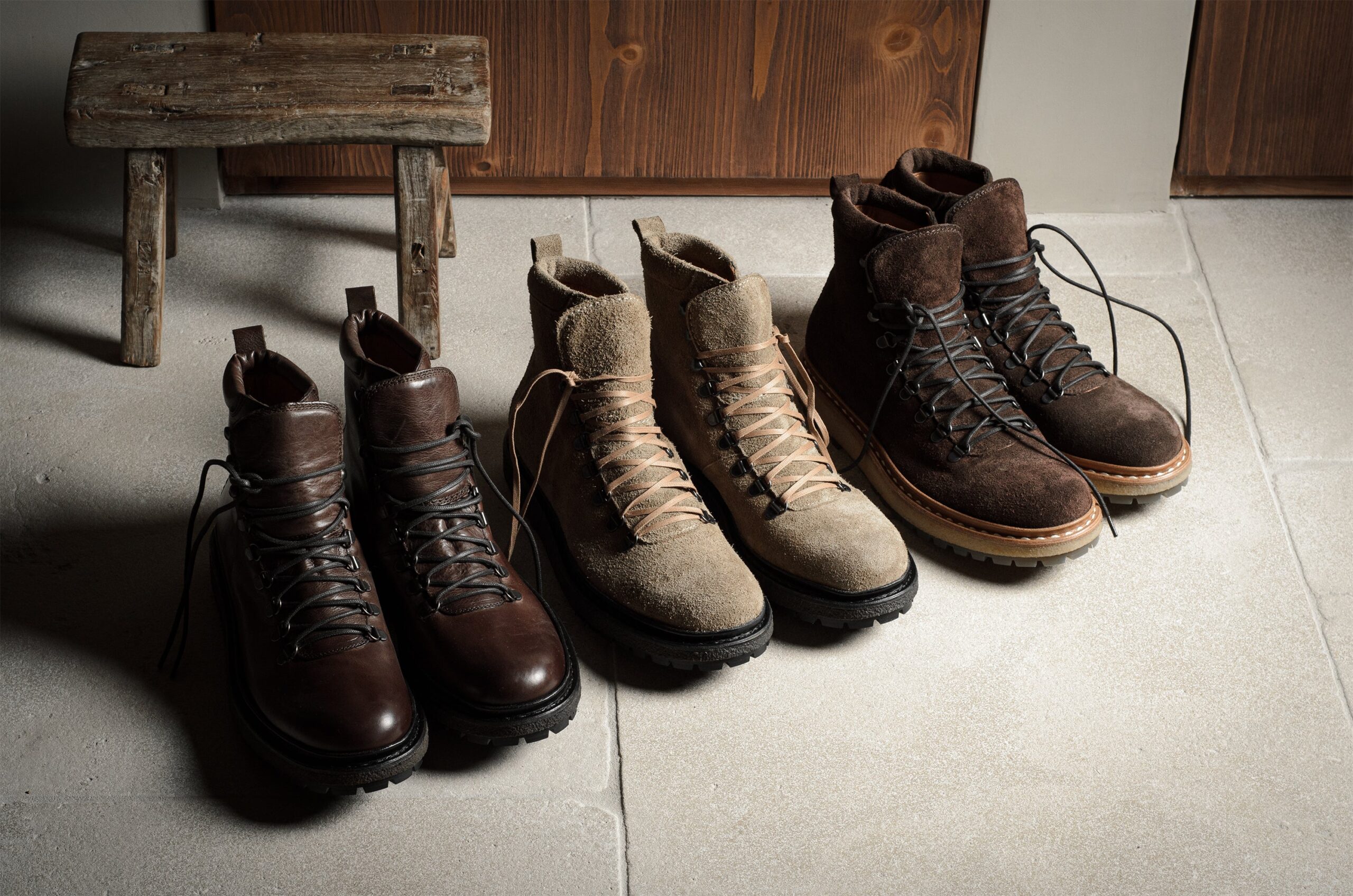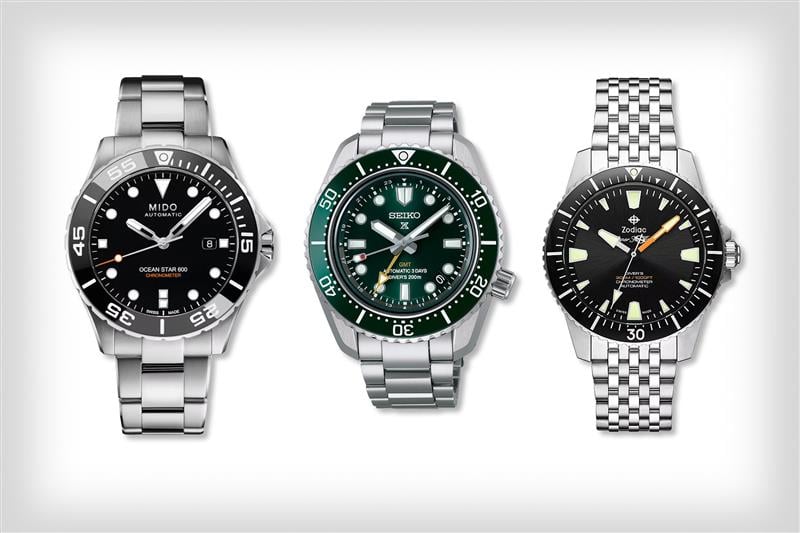10 of the best men’s footwear choices for starting 2026 in style
Jan 2, 2026Ski & Snowboard Outfits for Men: Mountain-Ready Style
- Dec 23, 2023
- 0 Comments
744

As winter landscapes transform into a playground for adventure enthusiasts, choosing the right ski and snowboard outfits for men takes center stage. These ensembles are a fusion of functionality and fashion, tailored to withstand the challenges of the slopes.
Men who indulge in these exhilarating winter sports know their attire is crucial to their performance and enjoyment. From the swish of skis to the glide of a snowboard, every element of their gear plays a pivotal role in harmonizing with the mountainous terrain and the biting cold.
Ski & Snowboard Outfits for Men
Where adrenaline meets nature, selecting ski and snowboard outfits is an art. It requires a keen understanding of materials that offer optimal thermal insulation, designs that promise unrestricted movement, and men’s snow gear that reflects personal flair.
High-Altitude Fashion: Snowboarder’s Attire
The ideal snowboard outfit combines comfort and style, essential for stunts and leisure. Begin with a softshell jacket, lightweight yet durable, offering freedom of movement and protection from the chill.
Pair this with versatile snow pants that provide functionality and a subtle nod to street style. For the layers beneath, a breathable, moisture-wicking thermal shirt will maintain core warmth, while a fleece-lined hoodie adds an extra layer for colder days.
Accessories are essential; select a pair of insulated gloves with touch-screen fingertips and a bandana for face protection that doubles as a trend statement. Choose a beanie that complements the outfit’s color scheme, ensuring it fits snugly under the helmet.
Monochrome Mastery: a Sleek Ski Ensemble
Embrace a unified color scheme for a stylish, performance-ready outfit. Opt for a ski jacket equipped with cutting-edge thermal technology for essential warmth. Beneath it, layer a merino wool base layer that promises comfort and efficient moisture control.
Choose coordinating ski pants that offer unrestricted movement. Round off your gear with functional accessories: grip-optimized gloves, a cozy beanie, and reflective-tone goggles.
Patterned Statement: Crafting a Snowboard Ensemble
For the avid snowboarder, building a stylish and practical outfit for the slopes begins with a waterproof, insulated jacket. Subtle patterns offer a fresh, modern aesthetic against the winter backdrop.
Layer this over a thermal to maintain core temperature without compromising on mobility. Pair with durable snow pants that provide contrast and are equipped with pockets for convenience.
Protect your hands with leather gloves and finish the look with reflective, mirrored goggles for eye protection and a cool touch.
Trailblazing in Style: A Cross-Country Ski Outfit
In crafting an outfit for the cross-country skier, start with a wind-resistant jacket that stands up to the elements while allowing for a potential burst of color. Couple this with leggings that contour to the body, ensuring comfort and support over long distances.
Gloves are a must, selected for their thermal efficiency and nimble flexibility to maintain agility. A sleek yet snug beanie provides warmth, while advanced sports glasses shield the eyes from glare and the bite of the winter wind.
Ski & Snowboard Clothing Essentials
Jackets & Trousers
The jacket and trousers duo is a quintessential component of any ski and snowboard wardrobe. These pieces are about safeguarding against the elements.
The key lies in materials like Gore-Tex, renowned for its waterproofing capabilities, ensuring moisture stays out while allowing breathability. The significance of these garments extends beyond keeping dry; they are crucial for thermal insulation.
Jackets and trousers designed for winter sports often feature specialized linings and fillings, such as down or synthetic fibers, offering warmth without the bulk. Additionally, the design of these garments is tailored to enhance mobility, with features like articulated joints and adjustable fittings essential for the dynamic movements of skiing and snowboarding.
Hoodies & Sweaters
Underneath the outer shell, hoodies and sweaters emerge as vital layers. They serve a dual purpose: they provide additional insulation and offer a chance to infuse personal style into the outfit.
The art of layering is central to managing body temperature and adapting to changing conditions on the mountain. Often made from fleece or blended fabrics, hoodies balance warmth and breathability.
Sweaters, especially those crafted from wool or high-tech synthetic yarns, add a classic touch to the winter sports ensemble. Their versatility is critical, allowing them to be worn alone on milder days or under a jacket when the temperature drops.
Gloves & Socks
The extremities are often the first to feel the chill, making gloves and socks indispensable. Gloves provide warmth, but their ability to offer dexterity and grip is equally essential.
Materials that combine insulation with flexibility are preferred, often featuring waterproof and windproof properties.
Socks, while seemingly minor, play a significant role. The right pair of socks, typically made from merino wool or specialized synthetic blends, can keep feet warm and dry, preventing blisters and enhancing comfort in ski boots.
Their design is specific to skiing and snowboarding, offering targeted cushioning and support where needed most.
Specialized Gear for Peak Performance
Ski Suits & Bibs
Regarding high-performance ski and snowboard gear, ski suits and bibs stand out for their seamless blend of protection and mobility. With its all-in-one design, a ski suit offers comprehensive coverage against the cold and snow, making it a preferred choice for those seeking simplicity and efficiency in their attire.
The modern ski suit is crafted with flexibility, incorporating stretchable fabrics that allow for a full range of motion, a critical aspect for both skiing and snowboarding enthusiasts. Bibs, on the other hand, offer a unique combination of the insulation of trousers with an added layer of protection around the torso.
Their design is particularly beneficial in deep snow conditions, providing an extra barrier against the cold and moisture.
Polar Fleece & Thermal Layers
Central to any winter sports outfit is the layering system, and at the heart of this system lies polar fleece and other thermal layers. Polar fleece stands out for its exceptional warmth-to-weight ratio, offering substantial insulation without the bulk typically associated with winter clothing.
Its moisture-wicking properties keep the body dry, essential for physical activities like skiing and snowboarding. Thermal layers, often made from advanced synthetic materials or natural fibers like merino wool, are designed to be worn close to the skin.
Their primary function is maintaining body heat while allowing sweat to evaporate, keeping the wearer warm and comfortable throughout the day.
Ski Masks & Knit Caps
In the biting cold of the mountains, protecting the head and face is as crucial as any other body part. Ski masks provide comprehensive protection, covering the head, neck, and face, with openings for the eyes and sometimes the mouth.
They are essential for guarding against frostbite and windburn, especially when skiing or snowboarding at high speeds or in extreme conditions.
Knit caps, while offering less coverage, are a staple in winter sportswear for their simplicity and effectiveness in providing warmth. Made from wool or synthetic materials, these caps are an easy addition to any outfit, fitting snugly under helmets and adding an extra layer of insulation.
Accessorizing for Function & Fashion
Goggles & Gear
Goggles protect the eyes from the glare of the snow and UV radiation and improve visibility in varying light conditions. They come in various tints and coatings, each designed to enhance slope contrast and depth perception.
Moreover, modern goggles are designed to fit seamlessly with helmets, providing a comfortable and secure fit. Beyond goggles, other gear like wrist guards, knee pads, and impact shorts can be integrated depending on the activity level and personal preference, offering additional protection without compromising style.
Sleeves & Layering
The choice of sleeves and the approach to layering can significantly impact both the performance and aesthetic appeal of ski and snowboard outfits. Long sleeves are standard for base and mid-layers, providing full coverage and warmth.
However, the design of these sleeves varies—from thumbholes in base layers that keep the sleeves in place to articulated elbows in outer layers for greater mobility. The layering strategy should be adaptable: a base layer for moisture management, a mid-layer for insulation, and an outer layer for protection against wind and snow.
Color & Textile Choices
While the primary function of these garments is to provide protection and comfort, they also offer a canvas for personal expression. Bold colors and dynamic patterns can make a statement on the slopes, aiding visibility and adding an element of fun to the gear.
The choice of textiles is about finding the right balance between durability, flexibility, and weather resistance. Materials like nylon and polyester offer robustness and moisture-wicking properties, while innovative textiles provide enhanced stretchability and breathability, catering to the dynamic movements of winter sports.
Navigating Different Environments
Mountain & Backcountry Skiing
The choice of ski and snowboard outfits varies significantly depending on whether one is navigating groomed mountain slopes or exploring the untamed backcountry.
For mountain skiing, outfits can be more streamlined and aerodynamic, focusing on speed and agility. These often feature lightweight, flexible fabrics that provide ease of movement.
In contrast, backcountry skiing demands strong gear to handle a broader range of conditions. Durability and protection become paramount, with features like reinforced seams, extra pockets, and compatibility with avalanche safety equipment.
Regardless of the terrain, the importance of waterproofing and insulation remains constant, ensuring comfort and safety in all skiing environments.
Natural Environment & Protection
In colder, windier conditions, clothing with higher thermal insulation and windproof capabilities is essential. This might include heavier jackets, insulated pants, and layers that can be adjusted as needed.
Conversely, lighter layers and more breathable fabrics can be chosen in milder conditions to prevent overheating. It’s also essential to consider the sun’s impact—UV-protective gear and brighter colors for better visibility in snowy conditions.
The choice of materials also comes into play, with natural fibers like wool offering warmth and breathability and synthetic fibers providing durability and moisture management. The goal is to create an outfit that protects against the elements and works harmoniously with them.
Mastering Style on the Slope
Mastering ski and snowboard outfits for men reflects a seamless blend of performance and fashion. Having explored the layers and accessories that comprise a skier’s and snowboarder’s essentials, it becomes clear that the perfect ensemble is about confidence on the slopes and in the lodge.
The transition from the adrenaline of the descent to the relaxed après-ski atmosphere should be effortless, with attire as comfortable during a lively evening as it is amidst the day’s ventures. This curation of alpine wear is designed to ensure that every moment, from the morning’s first run to the evening’s last toast, is embraced with style and substance.
Publisher: Source link







